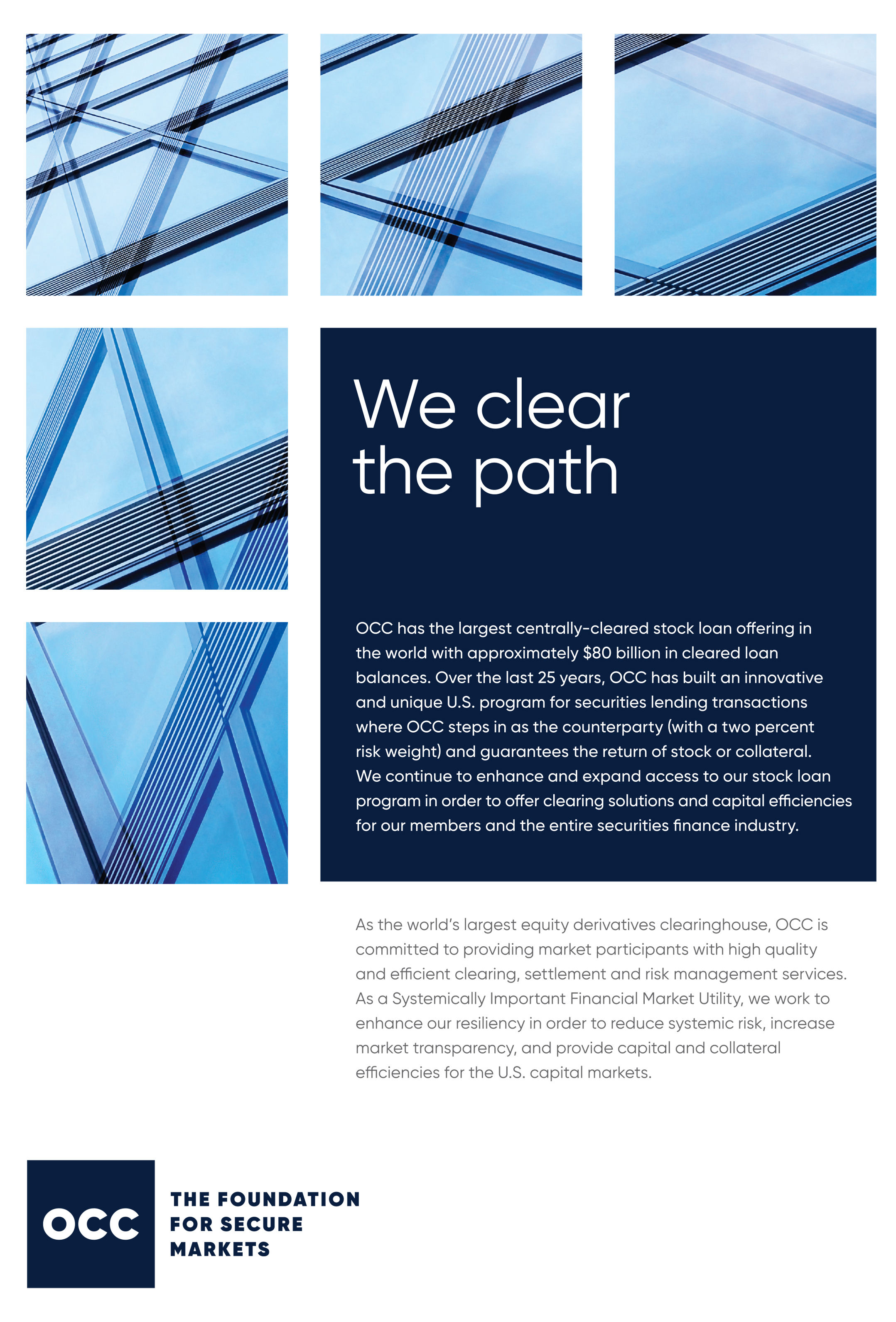Real-time revolution: Leveraging technology for agile decision-making
6 April 2025
Darren Crowther, head of Securities Finance and Collateral Management at Broadridge, explores how real-time innovations are reshaping the industry, facilitating rapid responses to market dynamics enhancing risk management, and driving improved operational efficiency
 Image: Darren Crowther
Image: Darren Crowther
As the securities finance industry evolves amid a landscape of economic volatility and regulatory complexity, the imperative for real-time decision-making capabilities has never been more pressing.
In an era where speed and precision dictate success, the adoption of cutting-edge technologies is transforming how market participants operate, enabling immediate access to critical data and insights.
The need for real-time solutions
Traditionally, securities finance operations have been characterised by delayed reporting and batch processing, causing inefficiencies and missed opportunities. The global securities lending market is significant, contributing billions of dollars annually and highlighting its importance.
As markets become more interconnected and volatile, the ability to make informed decisions in real time has emerged as a key differentiator. Institutional investors, hedge funds, and asset managers are under pressure to optimise their portfolios quickly while adhering to stringent regulatory requirements.
The push for real-time capabilities is driven by the demand for transparency and the need to mitigate risks associated with market fluctuations. In today’s fast-paced environment, information flow latency can lead to suboptimal decisions and financial losses. Real-time solutions address these challenges by ensuring that traders and risk managers have immediate access to actionable insights, allowing them to respond swiftly to changes in market conditions.
Key technologies driving the change
AI and machine learning provide advanced data analytics that enhance decision-making accuracy. Recent industry reports suggest that more than half of financial institutions have accelerated their AI investments to improve decision-making and operational efficiency.
These technologies process vast datasets to identify patterns and predict trends. For instance, predictive analytics powered by AI can forecast market movements, allowing firms to reposition assets proactively. AI also plays a critical role in automating routine tasks, reducing human error, and freeing up resources for strategic activities.
For real-time data analytics platforms, these offer continuous data streams, providing up-to-the-minute information on market conditions. Firms leveraging these insights report a significant increase in decision-making speed and accuracy.
By integrating real-time analytics, firms can detect anomalies or arbitrage opportunities and act before market conditions change. Moreover, real-time analytics support stress testing by simulating various market scenarios, helping firms to assess the potential impact of market shocks on their portfolios.
Cloud computing and distributed ledger technology (DLT) is also a key technology driving change. Cloud-based solutions and DLT provide the infrastructure necessary for integrating disparate data sources, facilitating seamless information exchange across global operations.
A recent World Economic Forum report highlights that DLT implementations can significantly reduce transaction costs while enhancing transparency and security. Cloud computing also offers scalability and flexibility, enabling firms to adapt their technology stack to evolving business needs without incurring massive infrastructure expenses.
Benefits of real-time decision-making
1. Enhanced risk management
Real-time technologies enable dynamic monitoring and management of risk exposures. Many firms have reported reductions in risk-related losses due to more effective real-time risk management capabilities.
By receiving real-time alerts on breaches of risk thresholds, firms can institute corrective measures such as adjusting collateral requirements or reallocating resources. This proactive approach not only safeguards assets but also builds client and stakeholder confidence in the firm’s risk management protocols.
2. Improved liquidity and trade execution
The ability to process transactions in real time improves market liquidity and broadens access to diverse asset classes. Consistent growth in lending volumes reported by the International Securities Lending Association (ISLA) underscores the need for efficient real-time processing.
Investors benefit from reduced settlement times, leading to faster reinvestment opportunities and potentially higher returns. Real-time trade execution also reduces counterparty risk, as transactions are completed and settled with greater speed and certainty.
3. Regulatory compliance and transparency
Real-time reporting capabilities address the data-intensive demands of regulatory frameworks, such as the Securities Financing Transactions Regulation (SFTR) in Europe and equivalent standards worldwide. These systems can reduce compliance costs by providing accurate and timely reporting.
Firms that embrace real-time compliance solutions are better positioned to manage regulatory scrutiny and avoid penalties associated with reporting delays or inaccuracies. Transparency facilitated by real-time solutions enhances the firm’s reputation, attracting investment and fostering long-term client relationships.
Challenges in implementation
Despite the clear advantages of real-time systems, their implementation poses several challenges. Transitioning to these systems requires substantial financial investment, not only in technology infrastructure but also in staff training and change management. Firms must build a workforce adept at leveraging real-time tools and interpreting complex datasets for strategic decision-making.
Additionally, cybersecurity concerns remain paramount. As data volumes increase, ensuring the integrity and security of information against cyberthreats becomes more critical. Firms must implement robust security measures, such as encryption and multi-factor authentication, to protect sensitive client data. The potential costs of cybercrime, projected to rise significantly, highlight the importance of safeguarding real-time systems.
Success stories and industry leaders
Several industry leaders are pioneering the use of real-time technologies to gain a competitive edge. Broadridge, for example, serves a significant number of major financial institutions with its Securities Finance and Collateral Management (SFCM) platform, which supports real-time insights. This platform demonstrates the impact of such solutions in streamlining operations and enhancing market engagement.
Broadridge’s hybrid approach combines global standards with local adaptability, enabling firms to manage multi-asset trading across varying regulatory landscapes efficiently. This flexibility is crucial for financial institutions looking to expand into new markets while maintaining robust risk management and reporting practices.
The path forward
As the securities finance industry evolves, the adoption of real-time technologies will become increasingly vital. Firms must prioritise investment in these solutions, fostering a culture of innovation and collaboration across the industry. To stay competitive, companies need to embrace technologies that not only enhance efficiency but also provide strategic advantages in a rapidly changing market environment.
Collaboration between financial institutions, technology providers, and regulators is essential to create a harmonised framework that supports real-time adoption globally. This includes developing interoperable systems and standards that facilitate seamless integration and data exchange across different regions and jurisdictions. With fintech investment expected to reach significant levels, technology’s critical role in evolving financial landscapes is underscored.
Conclusion
The real-time revolution in securities finance heralds a new era of agility, efficiency, and strategic foresight. By embracing technologies that enable instant access to information and adaptive decision-making, firms can unlock significant value, enhance risk management, and achieve greater transparency. As the industry charts its path forward, those who invest in and harness real-time capabilities will be best positioned to thrive in an increasingly complex and competitive global market.
In an era where speed and precision dictate success, the adoption of cutting-edge technologies is transforming how market participants operate, enabling immediate access to critical data and insights.
The need for real-time solutions
Traditionally, securities finance operations have been characterised by delayed reporting and batch processing, causing inefficiencies and missed opportunities. The global securities lending market is significant, contributing billions of dollars annually and highlighting its importance.
As markets become more interconnected and volatile, the ability to make informed decisions in real time has emerged as a key differentiator. Institutional investors, hedge funds, and asset managers are under pressure to optimise their portfolios quickly while adhering to stringent regulatory requirements.
The push for real-time capabilities is driven by the demand for transparency and the need to mitigate risks associated with market fluctuations. In today’s fast-paced environment, information flow latency can lead to suboptimal decisions and financial losses. Real-time solutions address these challenges by ensuring that traders and risk managers have immediate access to actionable insights, allowing them to respond swiftly to changes in market conditions.
Key technologies driving the change
AI and machine learning provide advanced data analytics that enhance decision-making accuracy. Recent industry reports suggest that more than half of financial institutions have accelerated their AI investments to improve decision-making and operational efficiency.
These technologies process vast datasets to identify patterns and predict trends. For instance, predictive analytics powered by AI can forecast market movements, allowing firms to reposition assets proactively. AI also plays a critical role in automating routine tasks, reducing human error, and freeing up resources for strategic activities.
For real-time data analytics platforms, these offer continuous data streams, providing up-to-the-minute information on market conditions. Firms leveraging these insights report a significant increase in decision-making speed and accuracy.
By integrating real-time analytics, firms can detect anomalies or arbitrage opportunities and act before market conditions change. Moreover, real-time analytics support stress testing by simulating various market scenarios, helping firms to assess the potential impact of market shocks on their portfolios.
Cloud computing and distributed ledger technology (DLT) is also a key technology driving change. Cloud-based solutions and DLT provide the infrastructure necessary for integrating disparate data sources, facilitating seamless information exchange across global operations.
A recent World Economic Forum report highlights that DLT implementations can significantly reduce transaction costs while enhancing transparency and security. Cloud computing also offers scalability and flexibility, enabling firms to adapt their technology stack to evolving business needs without incurring massive infrastructure expenses.
Benefits of real-time decision-making
1. Enhanced risk management
Real-time technologies enable dynamic monitoring and management of risk exposures. Many firms have reported reductions in risk-related losses due to more effective real-time risk management capabilities.
By receiving real-time alerts on breaches of risk thresholds, firms can institute corrective measures such as adjusting collateral requirements or reallocating resources. This proactive approach not only safeguards assets but also builds client and stakeholder confidence in the firm’s risk management protocols.
2. Improved liquidity and trade execution
The ability to process transactions in real time improves market liquidity and broadens access to diverse asset classes. Consistent growth in lending volumes reported by the International Securities Lending Association (ISLA) underscores the need for efficient real-time processing.
Investors benefit from reduced settlement times, leading to faster reinvestment opportunities and potentially higher returns. Real-time trade execution also reduces counterparty risk, as transactions are completed and settled with greater speed and certainty.
3. Regulatory compliance and transparency
Real-time reporting capabilities address the data-intensive demands of regulatory frameworks, such as the Securities Financing Transactions Regulation (SFTR) in Europe and equivalent standards worldwide. These systems can reduce compliance costs by providing accurate and timely reporting.
Firms that embrace real-time compliance solutions are better positioned to manage regulatory scrutiny and avoid penalties associated with reporting delays or inaccuracies. Transparency facilitated by real-time solutions enhances the firm’s reputation, attracting investment and fostering long-term client relationships.
Challenges in implementation
Despite the clear advantages of real-time systems, their implementation poses several challenges. Transitioning to these systems requires substantial financial investment, not only in technology infrastructure but also in staff training and change management. Firms must build a workforce adept at leveraging real-time tools and interpreting complex datasets for strategic decision-making.
Additionally, cybersecurity concerns remain paramount. As data volumes increase, ensuring the integrity and security of information against cyberthreats becomes more critical. Firms must implement robust security measures, such as encryption and multi-factor authentication, to protect sensitive client data. The potential costs of cybercrime, projected to rise significantly, highlight the importance of safeguarding real-time systems.
Success stories and industry leaders
Several industry leaders are pioneering the use of real-time technologies to gain a competitive edge. Broadridge, for example, serves a significant number of major financial institutions with its Securities Finance and Collateral Management (SFCM) platform, which supports real-time insights. This platform demonstrates the impact of such solutions in streamlining operations and enhancing market engagement.
Broadridge’s hybrid approach combines global standards with local adaptability, enabling firms to manage multi-asset trading across varying regulatory landscapes efficiently. This flexibility is crucial for financial institutions looking to expand into new markets while maintaining robust risk management and reporting practices.
The path forward
As the securities finance industry evolves, the adoption of real-time technologies will become increasingly vital. Firms must prioritise investment in these solutions, fostering a culture of innovation and collaboration across the industry. To stay competitive, companies need to embrace technologies that not only enhance efficiency but also provide strategic advantages in a rapidly changing market environment.
Collaboration between financial institutions, technology providers, and regulators is essential to create a harmonised framework that supports real-time adoption globally. This includes developing interoperable systems and standards that facilitate seamless integration and data exchange across different regions and jurisdictions. With fintech investment expected to reach significant levels, technology’s critical role in evolving financial landscapes is underscored.
Conclusion
The real-time revolution in securities finance heralds a new era of agility, efficiency, and strategic foresight. By embracing technologies that enable instant access to information and adaptive decision-making, firms can unlock significant value, enhance risk management, and achieve greater transparency. As the industry charts its path forward, those who invest in and harness real-time capabilities will be best positioned to thrive in an increasingly complex and competitive global market.
NO FEE, NO RISK
100% ON RETURNS If you invest in only one securities finance news source this year, make sure it is your free subscription to Securities Finance Times
100% ON RETURNS If you invest in only one securities finance news source this year, make sure it is your free subscription to Securities Finance Times



